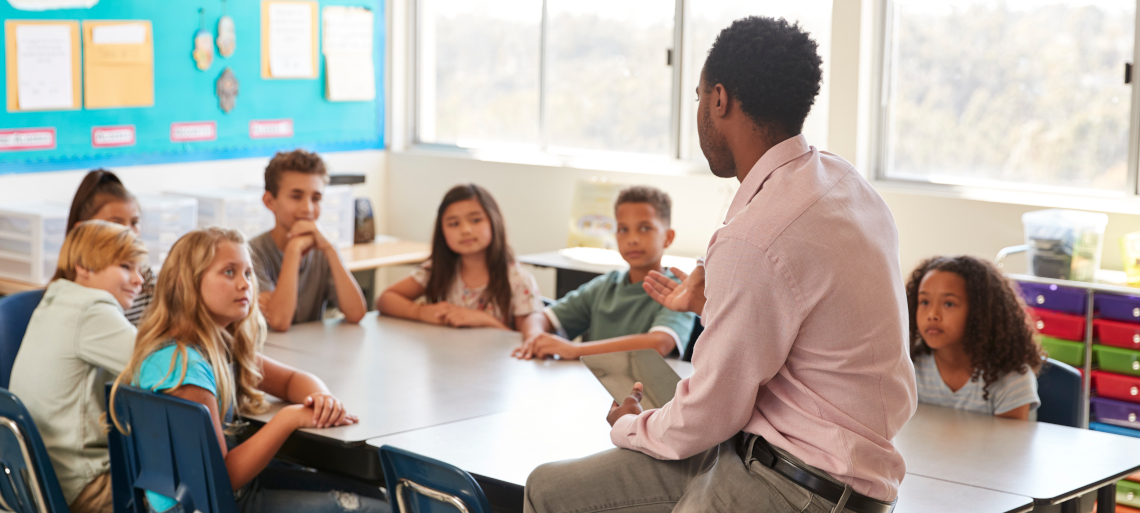As educators have seen, especially during this past school year, it has become increasingly important to focus on the mental health and wellness of our students. Finding balance and making time to focus on our own self-care is essential so that we can model this for our students. Being prepared means access to various resources, including methods and tools to help students build social emotional learning (SEL) skills.
Read more: 4 Steps towards digital wellness for students
For educators just getting started with SEL and looking for more information, I recommend exploring CASEL, the Collaborative for Academic, Social and Emotional Learning, and their materials.
Why SEL matters
SEL has become an area of focus for many educators, and in recent conferences, there were more sessions focused on SEL than in the past.
Why does SEL matter?
There is a direct connection between SEL and the essential skills employers are looking for now and will be looking for in the future. Skills like teamwork, communication, problem-solving, and creativity, to name a few.
Research regarding SEL has shown that when we regularly address the five competencies of SEL in our schools, it has a positive impact on student wellbeing and leads to increases in academic performance.
Focusing on the five SEL competencies
Because of the importance of SEL, we need ideas and tools to better create learning experiences to foster the development of each of the five SEL competencies:
- Self-awareness: Students need to become aware of their skills and interests as they learn. Understanding where we are in the learning process is important.
- Self-management: As students set goals and work through assignments, they develop the skills to deal with any stress experienced during the learning process. Using different teaching methods and tools, we can help students understand their emotions and manage stress.
- Social awareness: It is important that students develop an awareness of similarities or differences between one another. Understanding different perspectives and cultures and developing empathy as they learn is important.
- Relationship skills: Being able to ask for help, provide support, and work as part of a team are essential skills. Providing opportunities for students to develop relationships in our classrooms will best prepare them for future workplace success.
- Decision-making: As students create to share what they have learned, they develop critical thinking and problem-solving skills. Understanding the consequences of actions, focusing on well-being and processing information, and finding solutions are vital for students’ success.
There are many options to get started, and it is important to leverage the methods and tools we choose to create spaces where our students can feel more connected to us and to each other. We can help them to build academic skills, as well as the essential SEL skills.
Read more: Using the school LMS to provide emotional support in remote learning
Recently, Buncee created a toolkit that offers everything for educators to get started in their classrooms with ideas, research, and many ready-to-use template activities for grades K-6 and 7-12. With access to a toolkit such as this, it helps educators feel confident with bringing SEL into the classroom!
6 Ways to focus on SEL
Here are six options to try that can help with creating opportunities for students to develop self and social awareness and stay engaged in learning:
- Book Creator offers many possibilities for focusing on SEL skills. Students can create their own books as a way to share what they are learning throughout the year and use it as a way to reflect on their growth. Options for creating books include adding text, images, audio, and video. Perhaps create one book for all students to add their “About Me” information to learn about classmates or to connect students globally and build social awareness.
- Game-based learning is always a good choice to promote collaboration and boost student engagement. With the many digital tools available, they work well for in-person, hybrid, and virtual environments. Whether students collaborate on teams and build teamwork skills or use the games to track their own growth and set new goals, tools like Blooket, Gimkit, Kahoot!, Quizizz, Quizlet Live are great options to check out.
- Google Jamboard. We enjoyed using Jamboard this year in combination with breakout rooms in Microsoft Teams. It creates a quick way to have students work together in a collaborative space while also communicating in a breakout room. Leveraging these tools together fosters a greater sense of community, especially if students are split between home and in the classroom.
- Spaces offers a digital portfolio platform that assists teachers to better understand students, their interests, and needs in learning. Digital portfolios help students develop SEL skills of self-awareness and self-management as they reflect on their growth and set new goals for their learning journey.
- Tract is a peer-to-peer program for students ages eight and up, in which students can work through on-demand classes or become creators of their own content. With Tract, educators support SEL and self-efficacy through student-directed, project-based learning through the enrichment clubs and on-demand classes available.
- Wakelet offers many possibilities for classroom use. Students can have their own Wakelet to add artifacts of work, collaborate with peers, or even record Flipgrid videos to share their learning. For project-based learning, creating a Wakelet collection enables students to learn from one another and explore new ideas and perspectives.
All in all
It is important to remember that finding ways to bring SEL into our classrooms is not something extra that we have to add to what we are already doing. We can weave in activities that promote student engagement in learning while developing the essential SEL skills to best prepare them for the future.







